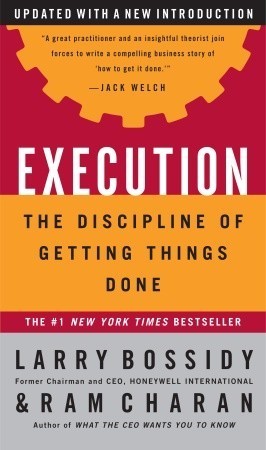More on this book
Community
Kindle Notes & Highlights
Read between
January 5 - January 31, 2019
The three processes—people, strategy, and operations— remain the building blocks and heart of good execution. But as the economic, political, and business environments change, the ways in which they are carried out also change.
One way to ensure that you have the right people in the right jobs in this rapidly shifting environment is by writing job descriptions for the kind of people you need in each job as it will exist tomorrow, then match those descriptions against the talents and abilities of the peole holding those jobs today.
To execute well there must be accountability, clear goals, accurate methods to measure performance, and the right rewards for people who perform.
To understand execution, you have to keep three key points in mind: Execution is a discipline, and integral to strategy. Execution is the major job of the business leader. Execution must be a core element of an organization’s culture.
Execution is a systematic process of rigorously discussing hows and whats, questioning, tenaciously following through, and ensuring accountability.
The heart of execution lies in the three core processes: the people process, the strategy process, and the operations process.
You need robust dialogue to surface the realities of the business. You need accountability for results—discussed openly and agreed to by those responsible—to get things done and reward the best performers. You need follow-through to ensure the plans are on track.
everyone likes to say that people are the most important ingredient in their success. But they often hand off the job of assessing people and rewarding them to the HR staff, then rubber-stamp the recommendations at their reviews. Far too many leaders avoid debating about people openly in group settings. That’s no way to lead. Only line leaders who know the people can make the right judgments. Good judgments come from practice and experience.
The new CEO came from manufacturing. He and his team reviewed and discussed the hows with plant managers, set milestones, and followed through with discipline and consistency to review them.
First, he got to know the company intimately, traveling around the globe for three months, meeting people at all levels formally and informally to talk and listen. In weekly e-mails that he sent to the whole organization, he not only told employees what he was thinking but also asked them to respond and make suggestions.
They made the company’s goals, issues, and new leadership style clear to the employees everywhere.


